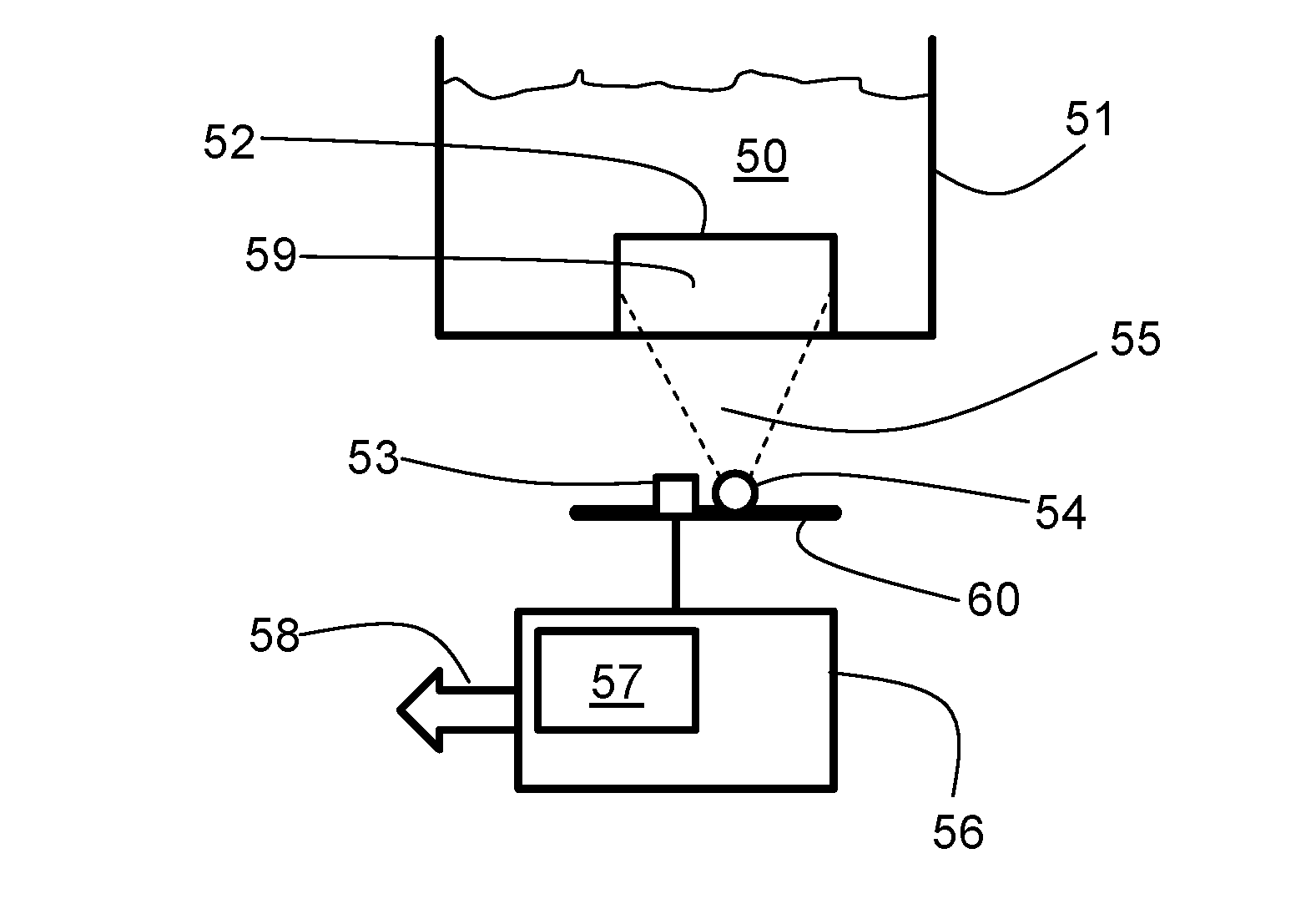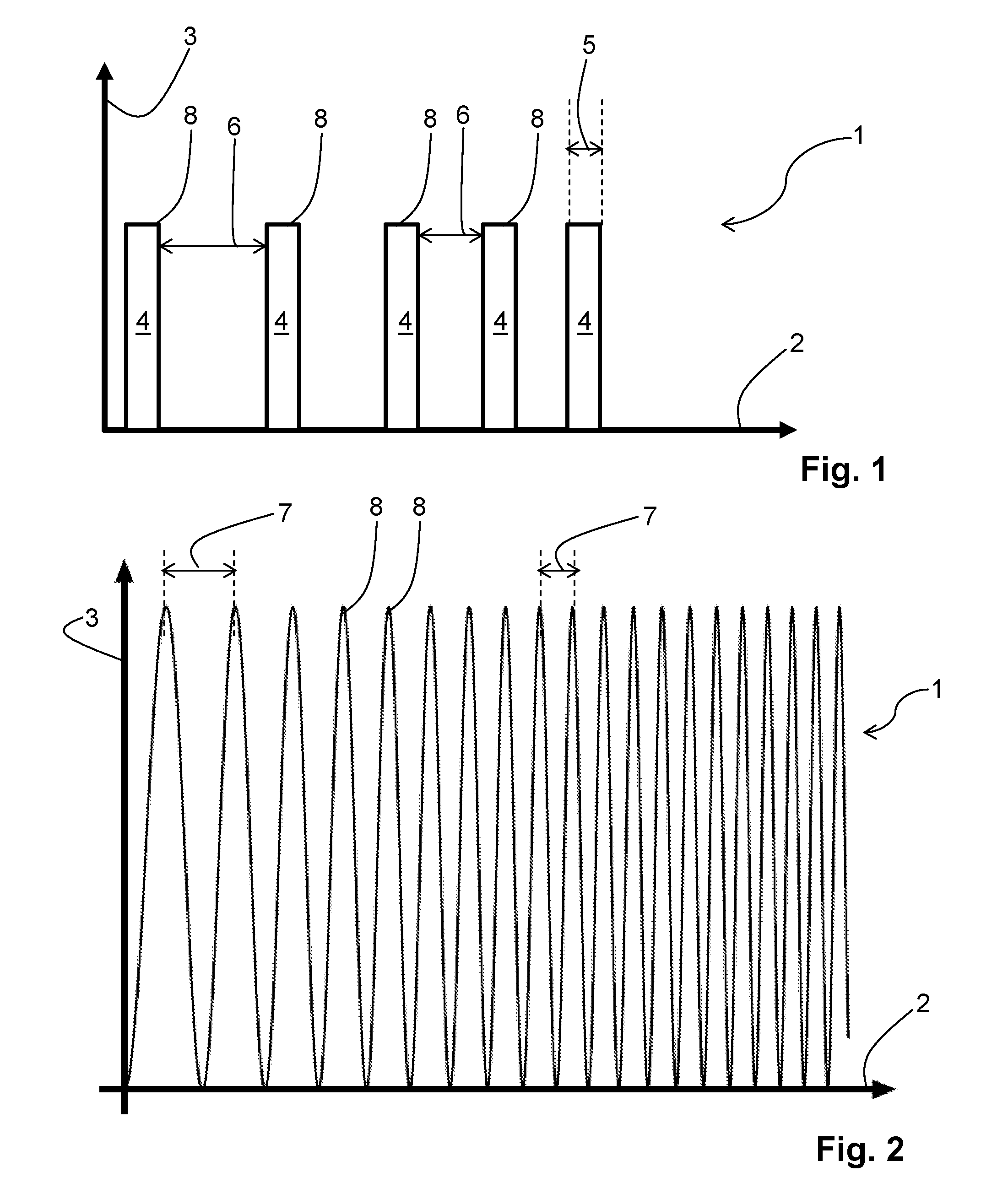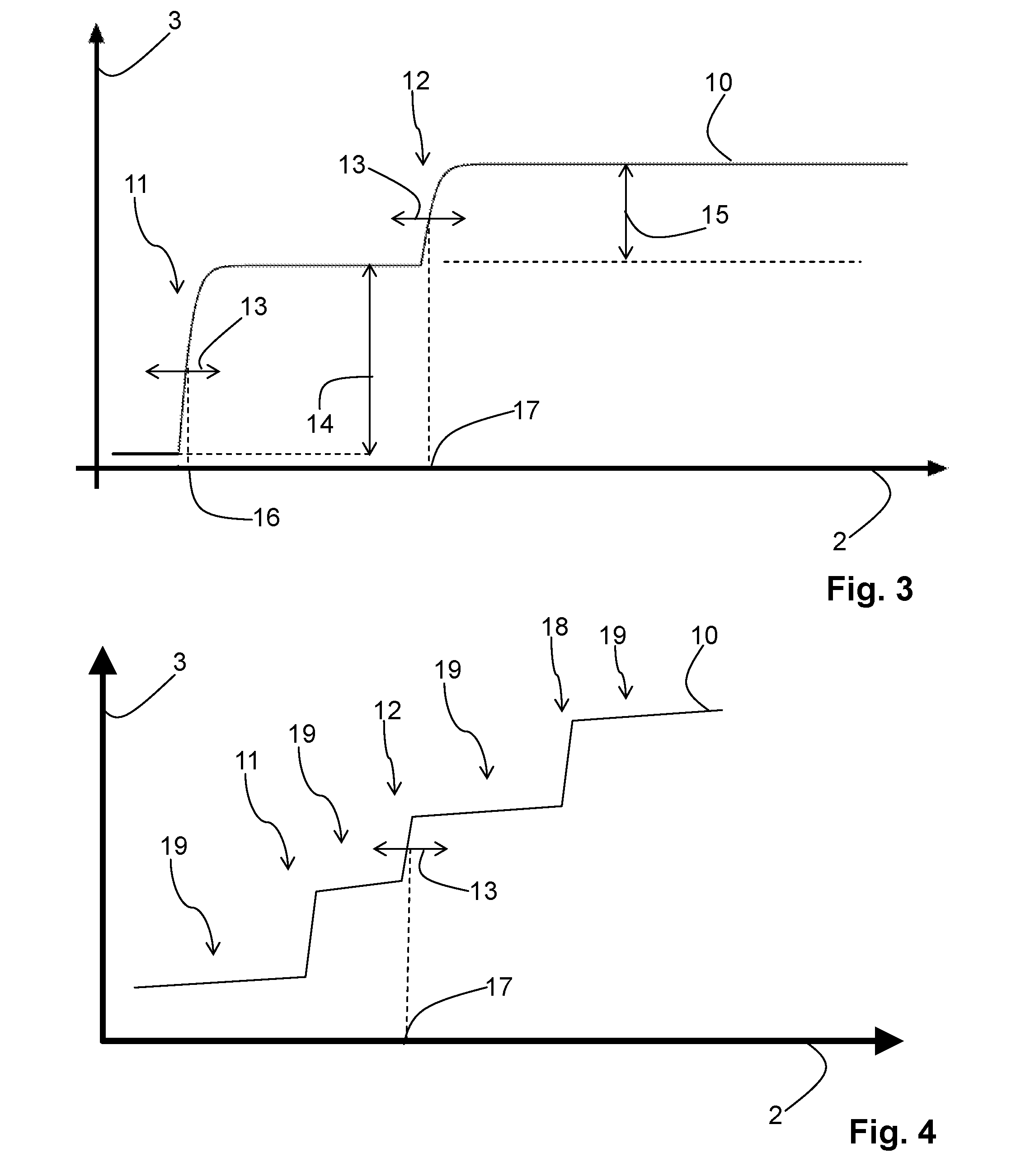Method for determining a variable of a sample
- Summary
- Abstract
- Description
- Claims
- Application Information
AI Technical Summary
Benefits of technology
Problems solved by technology
Method used
Image
Examples
Embodiment Construction
[0054]FIG. 1 shows an excitation signal 1, which is a sequence of pulses, as may be used for exciting a luminescence of a sensor substance in the method according to the invention. Time is shown on the abscissa 2, the ordinate 3 shows a measure for the strength of the excitation signal 1, for example the intensity of the excitation signal 1. The excitation signal 1 comprises a sequence of pulses 4, and is characterized by pulse durations 5 and distances 6 between pulses. In the sequence of pulses shown, the pulse durations 5 are constant over the duration of the sequence of pulses, the distances 6 between pulses, however, decrease from pulse 4 to pulse 4. The sum of pulse duration 5 and distance 6 between pulses for the rectangular pulses shown here corresponds to the temporal distance of consecutive signal maxima 8. The decreasing distances 6 between pulses therefore imply that the distances between consecutive signal maxima 8 of the excitation signal 1 decrease over the duration o...
PUM
 Login to View More
Login to View More Abstract
Description
Claims
Application Information
 Login to View More
Login to View More - R&D
- Intellectual Property
- Life Sciences
- Materials
- Tech Scout
- Unparalleled Data Quality
- Higher Quality Content
- 60% Fewer Hallucinations
Browse by: Latest US Patents, China's latest patents, Technical Efficacy Thesaurus, Application Domain, Technology Topic, Popular Technical Reports.
© 2025 PatSnap. All rights reserved.Legal|Privacy policy|Modern Slavery Act Transparency Statement|Sitemap|About US| Contact US: help@patsnap.com



